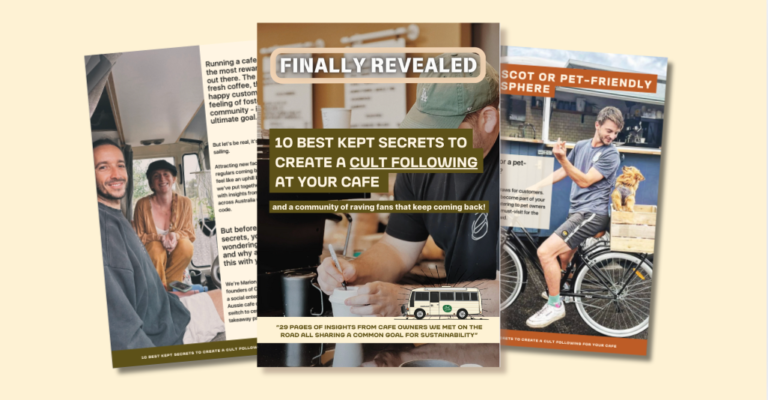What’s the Difference Between Home and Industrial Composting for Coffee Cups Takeaway?
When it comes to coffee cups takeaway, the word “compostable” is thrown around a lot.
But here’s the truth: not all compostable packaging is created equal, and definitely not all composting systems can handle them.
If you’re a café owner, a sustainability nerd, or just someone trying to do the right thing, knowing the difference between home and industrial composting is key to making better packaging decisions.
Let’s break it down.

First, What Is Composting Anyway?
Composting is nature’s version of recycling. It’s the process of turning organic waste (think food scraps, grass clippings, or certain types of packaging) into nutrient-rich compost using bacteria, fungi, worms, insects, oxygen, and the right balance of moisture and heat.
But here’s the catch: composting only works when the right conditions are met.
Without enough oxygen or the right microbes, even so-called compostable products can start to rot and release methane, a potent greenhouse gas. That’s the opposite of the eco-win we’re all after.
Home Composting: What You Can Actually Do in Your Backyard
Home composting is exactly what it sounds like: composting done at home, usually in a backyard bin, tumbler, or worm farm. The process is slow and steady, happening over months (sometimes even a year or more), and operates at lower temperatures than commercial composting facilities.
Here is what works in home composts:
Food scraps
Garden clippings and leaves
Certified home compostable packaging
What doesn’t:
Meat, fish, dairy (they attract pests)
Bioplastics like PLA (these need high temperatures to break down)
To be truly compostable at home, a product needs to meet the Australian Standard AS 5810-2010. Look for the official home compostable certification logo, this isn’t just a pretty sticker. It means the product has been tested to achieve:
- At least 90% of the material disintegrates into tiny pieces (<2mm) within 6 months in a home compost.
- At least 90% of the material biodegrades within 12 months at ambient home composting temperatures (20–30°C).
Leave no toxic residue for worms or plants
Good news: most Aussies with a compost bin at home can compost these products.
Not-so-good news: many Councils do not accept compostable packaging in the FOGO green bin. More details below, keep reading…
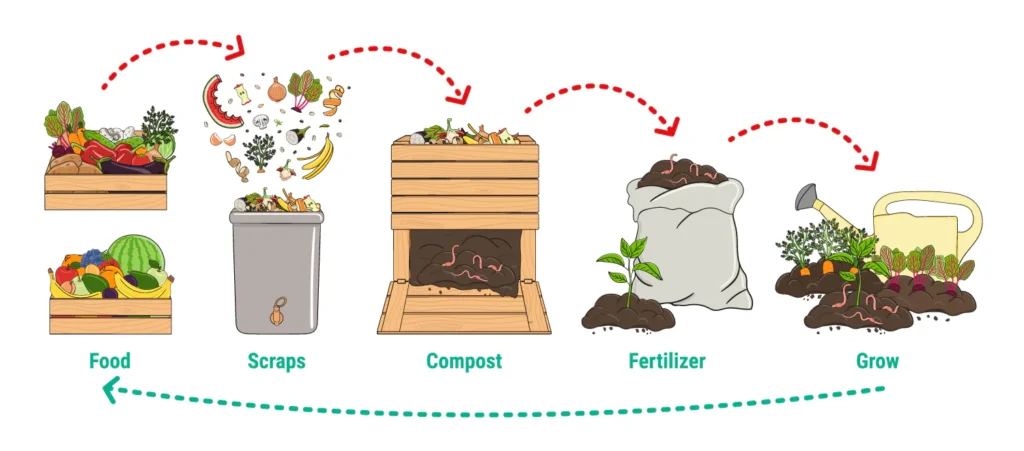
Industrial Composting: Big Facilities, Big Challenges
Industrial composting is like home composting, just faster, hotter, and way more controlled. These facilities can crank up the temperature to over 55°C and process large volumes of waste in just a few weeks.
They use high-tech systems like:
Turned windrows
Aerated static piles
In-vessel composting
This environment is perfect for breaking down harder-to-compost materials like most compostable coffee cups, compostable liners, PLA bioplastics or thicker packaging. Products designed for industrial composting need to meet AS 4736-2006 in Australia. That means:
- At least 90% of the material disintegrates into tiny pieces (<2mm) within 12 weeks.
- At least 90% of the material biodegrades within 6 months at high composting temperatures (55-60°C).
Leave no toxic residue for worms or plants
But there’s the catch:
Only 43 councils (out of 536) accept compostable packaging in their residential compost collections or FOGO (Food Organics Garden Organics). That’s only about 8% of Australians with access to the infrastructure needed to properly process these materials.
In NSW, the EPA has banned compostable packaging from going into FOGO organic bins altogether – even if it’s certified. That means commercially compostable coffee cups takeaway have no path to recovery – They’re often recommended as an alternative to plastic-lined cups – yet cannot actually be composted. That’s nonsense and as a result most “compostable” coffee cups also end up in landfill.
So, even if your packaging says it’s compostable, unless your customer has direct access to one of these facilities, it’s probably heading to landfill.
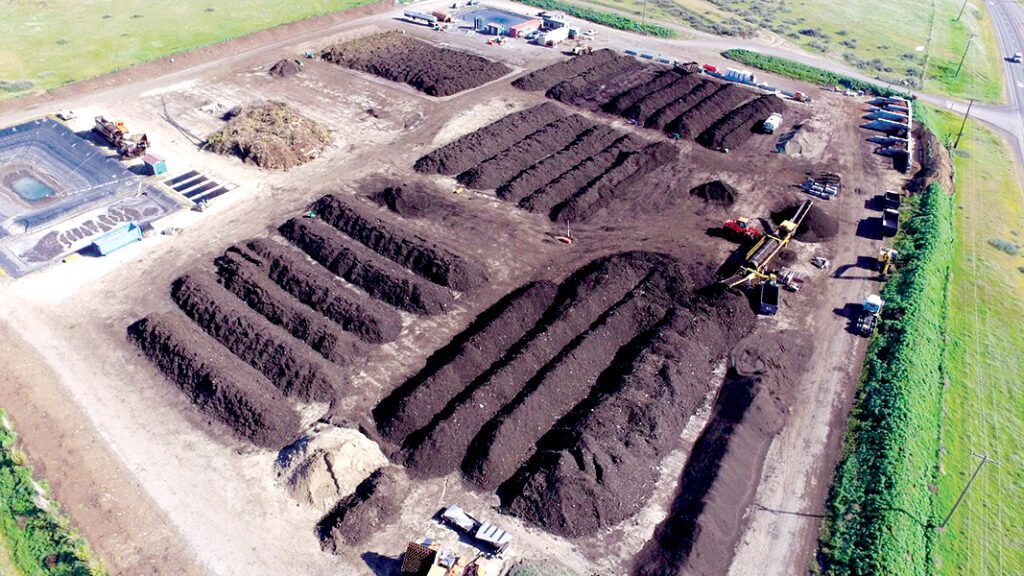
The Trouble with “Biodegradable” Claims
Here’s where it gets murky. A lot of packaging gets labelled “biodegradable,” but that word is virtually meaningless without a certified composting standard to back it up. Why?
Because technically, everything is biodegradable… eventually. It could take a few days, a few decades, or even a few centuries. Plus, many so-called biodegradable plastics are just regular plastics with chemical additives, designed to break into microplastics. Not exactly what you want in your soil or waterways.
So if it doesn’t have AS 5810 (for home composting) or AS 4736 (for industrial), assume it’s going to landfill.
So, Which Is Better for Coffee Cups Takeaway: Home or Industrial Composting?
In Australia, home compostable is the more reliable option. Why? Because you or your customer can actually compost it.
Industrial composting infrastructure is still catching up, and until there’s a bin at every café, park, or street corner that takes certified industrial compostable products, it’s just not practical to rely on it.
That said, compostable packaging (home or industrial) should only be used when:
A reusable option isn’t possible
The item is likely to be contaminated with food
It’s part of a closed-loop event or system (like festivals or takeaway-only cafés)
If you’re a café offering coffee cups takeaway, switching to certified home compostable cups and lids gives your customers a real chance to dispose of them responsibly, without needing special bins or access to far-off facilities.
In the race to reduce waste and fight greenwashing, knowledge is power.
For café owners, making the shift to certified home compostable packaging, especially for high-use items like coffee cups takeaway, is one of the most accessible and impactful steps you can take.
It’s not just about what a product is made from. It’s about where it goes at the end of its life.
So next time you see “compostable” on packaging, ask:
1. Is it home or industrial compostable?
2. Is it certified to Australian standards?
3. Can my customer actually compost this?
If the answer is yes across the board, you’re doing it right.
About the author:
Marion is a French Australian entrepreneur, profoundly interested in the composting industry. Her words are her own thoughts and come from her research and learning. Although she quotes and sources the information she shares, Marion is not a scientist or a researcher and her opinions should not be understood as a scientific truth.
Through her findings and experience in the industry, she is attempting to support hospitality businesses and producers in their search of alternative choices to single-use and other types of plastic packaging. You should always do your own research to best inform yourself.
Share this article :
Compost Club Blog
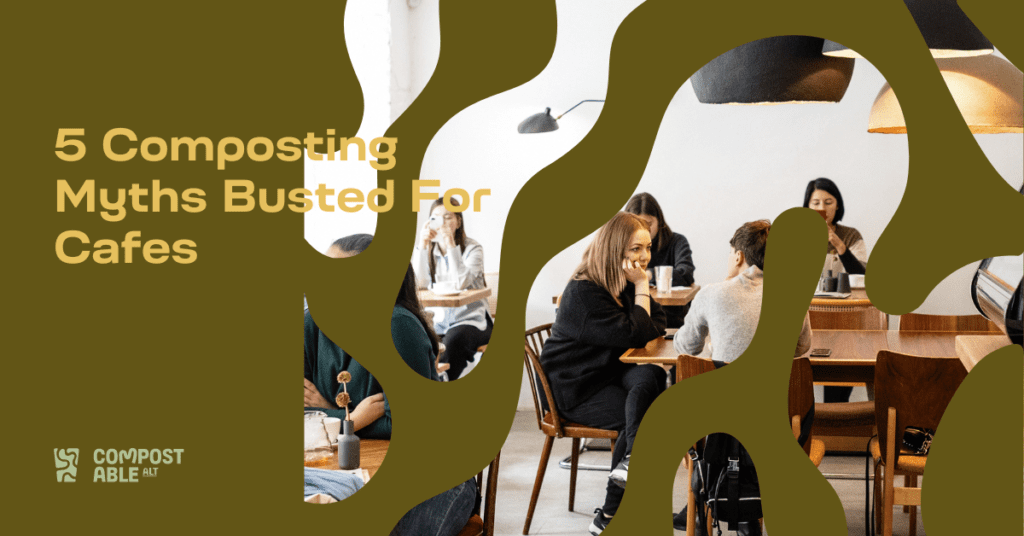
5 Coffee Takeaway Cup Composting Myths Busted for Cafes
Do you offer takeaway coffees? Let’s bust the 5 biggest coffee takeaway cup myths so you can make the right call for your business, your customers, and the planet.
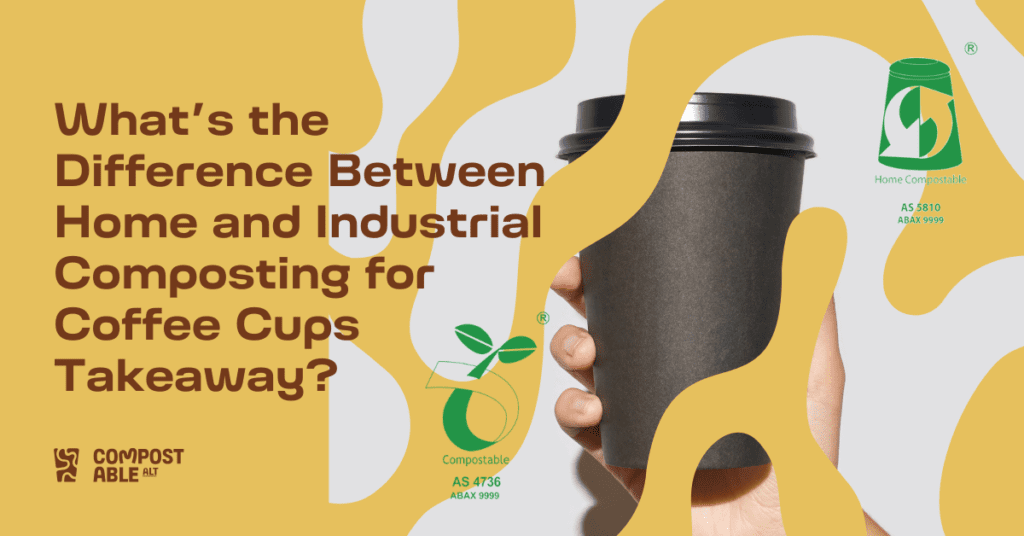
What’s the Difference Between Home and Industrial Composting for Coffee Cups Takeaway?
If you’re a café owner, a sustainability nerd, or just someone trying to do the right thing, knowing the difference between home and industrial composting is key to making better packaging decisions.
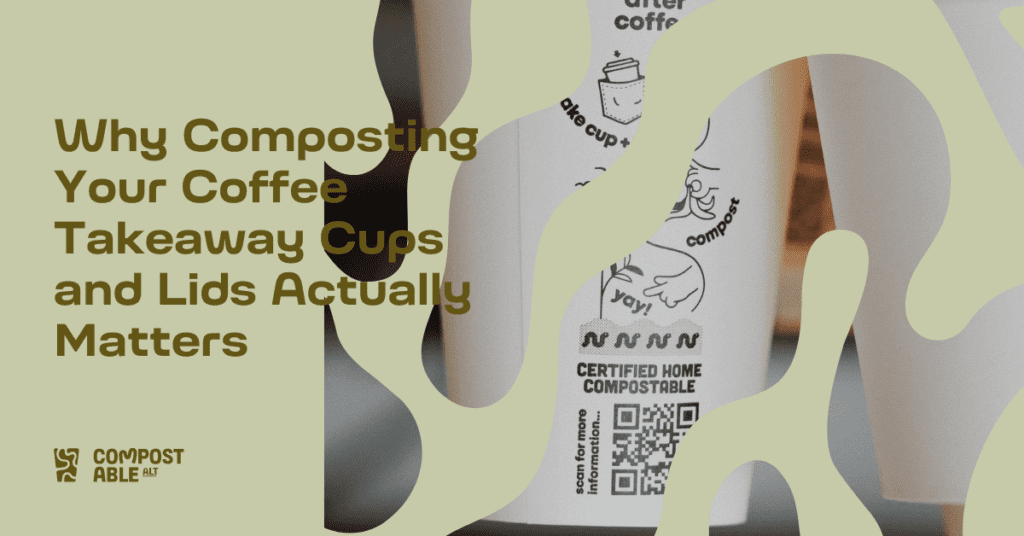
Why Composting Your Coffee Cups Takeaway Actually Matters
If you’re like most Aussies, coffee cups takeaway are part of your daily routine. Maybe it’s your morning long black from the local cafe or an arvo flat white on the go. But what happens after you’ve finished your drink?


